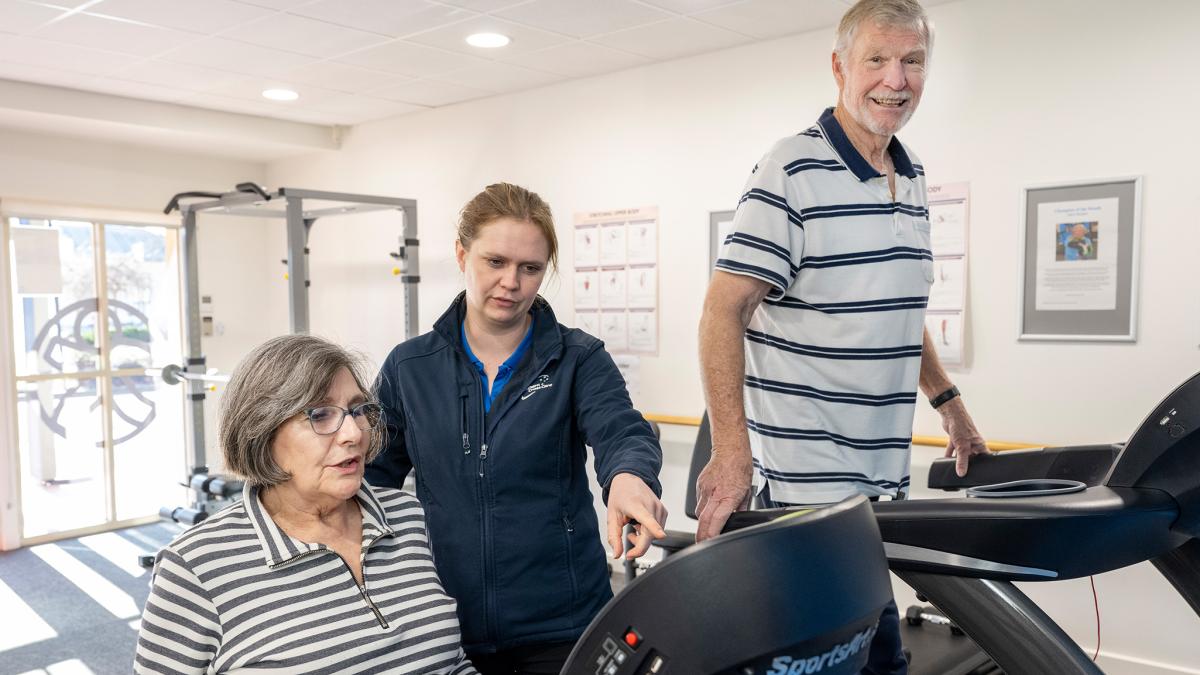The Importance of Aerobic Exercise for Healthy Ageing

Only about 20% of older adults achieve the national recommended guidelines for aerobic exercise, which is 150 minutes of moderate-intensity exercise a week!
Aerobic exercise, also known as cardiovascular exercise, includes activities that increase your heart rate and breathing, such as running, cycling, swimming, and brisk walking.
How does your body respond to aerobic exercise?
When you engage in aerobic exercise, your body responds in several ways to meet the increased demand for oxygen and energy.
As you start exercising, your heart and breathing rates increase to pump more blood and oxygen to your working muscles to meet the increased energy demand. On a cellular level, your blood vessels dilate to allow more blood to flow to the muscles. This helps transport oxygen and nutrients to the working muscles and remove waste products, such as carbon dioxide and lactic acid.
Over time, aerobic exercise can improve your endurance, allowing your heart to become more efficient at pumping blood, and increasing the amount of blood your heart can pump per minute. This is one reason why those who are more physically fit have a lower resting heart rate.
Exercising consistently can lead to numerous health benefits, such as lower blood pressure, improved cholesterol levels, reduced risk of heart disease, and enhanced overall cardiovascular health.
Aerobic exercise can also boost your mood and reduce stress and anxiety by prompting the release of endorphins and lowering stress hormones. You may have heard of the term 'runner's high' – that euphoric feeling some people get while running. Endorphins are behind that, and they're also responsible for the sense of relaxation and positivity that often follows a tough workout.
How to incorporate aerobic exercise in your life
You can work on your aerobic exercise through a variety of mechanisms - it doesn't need to be going for a run or a bike ride. Tips include:
- Don’t overcomplicate things: try walking around the local park or around the shops without taking too many rests
- Challenge the rate at which you’re walking: the more you push yourself the more your body will respond in a positive way
- Take it slow: begin with low-intensity activities like walking and gradually increase the intensity and duration as your fitness level improves
- Set realistic goals: set achievable goals that are specific and achievable. This will help you stay on track and monitor your progress
- Get social: exercising with friends or in group classes can help to motivate you if you struggle to get going on your own.
Test your aerobic ability with the Talk Test!
While participating in aerobic exercise, you can perform the “talk test” to determine how hard you’re actually exercising:
- If you are able to talk freely while doing the exercise, you know you’re only working at a low intensity
- If you’re needing to catch a breath every few words, you’re working at a moderate intensity
- If you’re catching your breath every word, you’re working at a high intensity.
If talking is challenging, you may be exercising too intensely, and if you can speak normally, you may not be working hard enough. To get the most out of the exercise you’re engaging in, whether it be swimming, playing tennis, or simply going for a walk; you will want to ensure you are working at least at a moderate intensity for up to 150 minutes per week. Over time, you can retest yourself to see if your endurance has improved.
To help you get enough aerobic exercise in your life, Southern Cross Care offers a range of tailored group classes and allied health support. There’s something for everyone, learn more here.
Sources:
- https://www.aihw.gov.au/reports/physical-activity/physical-activity
- https://www.mayoclinic.org/healthy-lifestyle/fitness/in-depth/aerobic-exercise/art-20045541
- https://my.clevelandclinic.org/health/articles/7050-aerobic-exercise
- https://www.physio-pedia.com/Effects_of_Exercise_on_Stress_Management
- https://mydr.com.au/sports-fitness/aerobic-exercise-the-health-benefits/
Share this article

